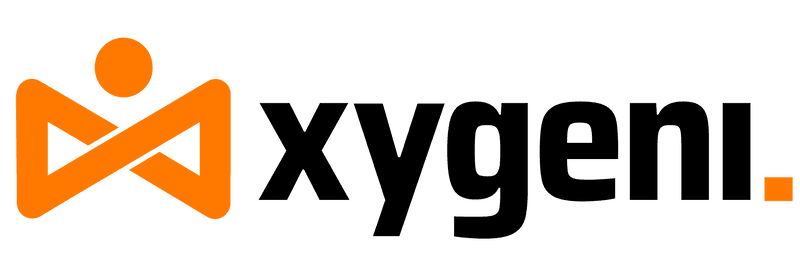1. Introduction: Why You Probably Missed This
If you weren’t at Black Hat 2025 in Vegas, or didn’t pay for the on-demand briefings, you probably missed one of the most practical sessions on modern AppSec. We showed how AI Automated Vulnerability Remediation is no longer hype: with code autofix, developers can see AI generate secure pull requests that patch vulnerabilities before they hit production. Instead of drowning in alerts, the talk explored how application security automation and appsec automation help filter noise, prioritize real risks, and integrate fixes directly into the pipeline. You’ll also see how automated application security testing ties it all together, giving teams a way to move fast without sacrificing security.
2. What Is AI Automated Vulnerability Remediation?
In simple terms, AI Automated Vulnerability Remediation spots suspicious activity and takes immediate action to contain or remediate it.
- Detection → Identifies anomalies, malicious code, or signs of attack.
- Response → Acts quickly to fix the issue, revoke access, or stop the compromised process.
Traditional threat detection and response tools focus on endpoints, while modern threat detection and response solutions expand into pipelines and code. For developers, the most effective approach uses real time threat detection that runs inside pull requests and CI/CD, ensuring fixes land directly in real workflows.
For a reference framework on detection and response tactics, see the MITRE ATT&CK® framework.
3. The Rise of Real Time Threat Detection
Threats today move fast. Attackers automate everything from dependency poisoning to pipeline tampering. Therefore, real time threat detection no longer feels optional, it’s essential for modern pipelines.
For example:
- A leaked secret can spread and cause abuse within minutes.
- A malicious dependency can run during your next build.
- A tampered CI workflow can push code to production without checks.
As a result, detecting in real time and responding late makes the difference between keeping your business safe or suffering a breach. Modern threat detection and response solutions emphasize speed and automated remediation, while traditional tools still rely too much on alerts alone.
4. AppSec Automation in Real Pipelines with AI Automated Vulnerability Remediation
Most developers don’t need another dashboard, they need security that runs where the code lives. That’s the promise of appsec automation. Instead of waiting for reviews at the end of the cycle, automation enforces guardrails directly in pull requests and CI/CD jobs.
In practice, application security automation:
- Flags vulnerabilities in code and fixes them before merge.
- Blocks malicious dependencies at install time.
- Revokes leaked secrets instantly, not days later.
This approach cuts noise and builds confidence that every pipeline run stays safe by default. When you pair it with AI Automated Vulnerability Remediation or code autofix, issues move from detection to resolution without developer friction.
5. Automated Application Security Testing in Action
Traditional testing slows teams down because it stops at detection. Automated application security testing changes that by running continuously in your CI/CD pipelines. Instead of waiting for manual reviews, tests run on every pull request and build.
The real advantage comes when testing meets remediation. With Autofix, automated application security testing not only identifies issues, code autofix patches them instantly and pushes PRs you can merge right away.
Combined with application security automation and appsec automation, testing becomes more than a gate. It evolves into a self-healing process that fixes vulnerabilities as fast as it finds them.
6. What You’ll Get in the Replay
Missed it live at Black Hat? Here’s your chance to catch up. The full replay isn’t theory, it shows AI Automated Vulnerability Remediation, code autofix, and application security automation running in real pipelines.
When you grab the replay, you’ll get:
- Full session recording → 20 minutes of hands-on demos, no hype.
- Slides + takeaways → Share practical insights with your team.
- AutoFix in action → Watch automated application security testing surface issues and AI push secure PRs to fix them.
- Free trial option → Try Autofix in your own pipeline and see how appsec automation actually works.
7. Xygeni’s AI Automated Vulnerability Remediation and Code Autofix in Action
Instead of forcing developers to rely on dashboards they rarely check, Xygeni delivers real-time threat detection and remediation directly inside workflows:
- In Pull Requests → code autofix applies secure fixes instantly, so vulnerabilities never pile up.
- In CI/CD Pipelines → The system flags tampered workflows or suspicious jobs before builds ship.
- In Dependencies → It highlights exploitable packages with context, so you fix what really matters.
This way, the system doesn’t just detect threats, it blocks and remediates them at the source. That makes Xygeni stand out from traditional tools by adding instant remediation without slowing down delivery.
8. Key Benefits of Application Security Automation for Dev Teams
Above all, Xygeni’s threat detection and response solution delivers speed and accuracy:
- Real-time protection → The system catches issues as they happen, not hours later.
- Developer-first remediation → Autofix generates secure pull requests with fixes, not just alerts.
- Supply chain coverage → It protects code, dependencies, secrets, and pipelines.
- Fewer false positives → Context-aware filters like reachability and exploitability focus on what matters.
- Faster delivery → Security enforces itself without breaking your flow.
Accordingly, Xygeni turns real-time threat detection into a practical advantage for both developers and security teams.
9. Conclusion: From Alerts to AppSec Automation
The software supply chain is the new battleground. Relying on detection alone is no longer enough. You need tools that not only flag risks but also fix them in real time.
Xygeni makes that possible by combining AI Automated Vulnerability Remediation, application security automation, and automated application security testing inside developer workflows.

